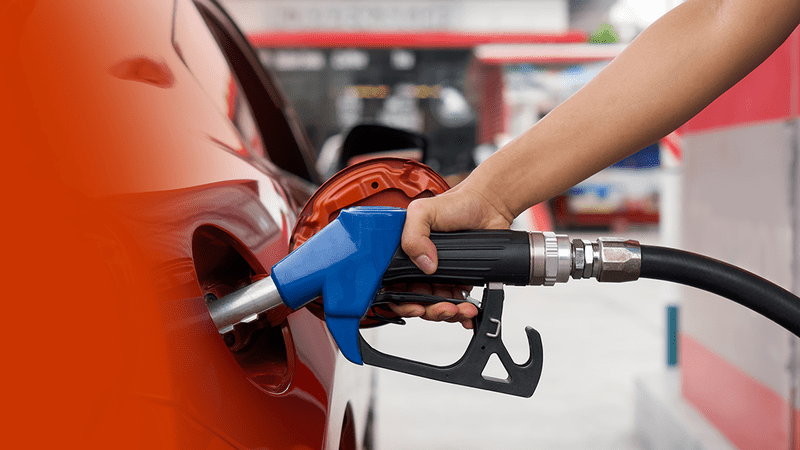
Staying Safe at the Pump

Static electricity-related incidents at retail gasoline outlets are extremely unusual, but the potential for them to happen appears to be the highest during cool or cold and dry climate conditions. In rare circumstances, these static related incidents have resulted in a brief flash fire occurring at the fill point. Consumers can take steps to minimize these and other potential fueling hazards by following safe refueling procedures all year long.
Most important, motorists should not get back into their vehicles during refueling. It may be a temptation to get back in the car for any number of reasons. But the average fill-up takes only two minutes, and staying outside the vehicle will greatly minimize the likelihood of any build-up of static electricity that could be discharged at the nozzle.
A build-up of static electricity can be caused by re-entering a vehicle during fueling, particularly in cool or cold and dry weather. If the motorist then returns to the vehicle fill pipe during refueling, the static may discharge at the fill point, causing a flash fire or small sustained fire with gasoline refueling vapors.
Motorists who cannot avoid getting back into the vehicle should always first touch a metal part of the vehicle with a bare hand, such as the door, or some other metal surface, away from the fill point upon exiting the vehicle.
Here are additional consumer refueling safety guidelines that will help keep you and your family safe when refueling your vehicle or filling up gasoline storage containers:
* Turn off your vehicle engine. Put your vehicle in park and/or set the emergency brake. Disable or turn off any auxiliary sources of ignition such as a camper or trailer heater, cooking units, or pilot lights.
* Do not smoke, light matches or lighters while refueling at the pump or when using gasoline anywhere else.
* Use only the refueling latch provided on the gasoline dispenser nozzle. Never jam the refueling latch on the nozzle open.
* Do not re-enter your vehicle during refueling. If you cannot avoid re-entering your vehicle, discharge any static build-up BEFORE reaching for the nozzle by touching something metal with a bare hand — such as the vehicle door — away from the nozzle.)
* In the unlikely event a static-caused fire occurs when refueling, leave the nozzle in the fill pipe and back away from the vehicle. Notify the station attendant immediately.
Portable Containers
* When dispensing gasoline into a container, use only an approved portable container and place it on the ground to avoid a possible static electricity ignition of fuel vapors. Containers should never be filled while inside a vehicle or its trunk, the bed of a pickup truck or the floor of a trailer.
* When filling a portable container, manually control the nozzle valve throughout the filling process. Fill a portable container slowly to decrease the chance of static electricity buildup and minimize spilling or splattering. Keep the nozzle in contact with the rim of the container opening while refueling.
* Fill container no more than 95 percent full to allow for expansion.
* Place cap tightly on the container after filling – do not use containers that do not seal properly.
* Only store gasoline in approved containers as required by federal or state authorities. Never store gasoline in glass or any other unapproved container.
* If gasoline spills on the container, make sure that it has evaporated before you place the container in your vehicle. Report spills to the attendant.
* When transporting gasoline in a portable container make sure it is secured against tipping and sliding, and never leave it in direct sunlight or in the trunk of a car.
Additional Safety Guidelines
* Do not over-fill or top-off your vehicle tank, which can cause gasoline spillage.
* Never allow children under licensed driving age to operate the pump.
* Avoid prolonged breathing of gasoline vapors. Use gasoline only in open areas that get plenty of fresh air. Keep your face away from the nozzle or container opening.
* Never siphon gasoline by mouth nor put gasoline in your mouth for any reason. Gasoline can be harmful or fatal if swallowed. If someone swallows gasoline, do not induce vomiting. Contact a doctor or and emergency medical service provider immediately.
* Keep gasoline away from your eyes and skin; it may cause irritation. Remove gasoline-soaked clothing immediately.
* Use gasoline as a motor fuel only. Never use gasoline to wash your hands or as a cleaning solvent.
